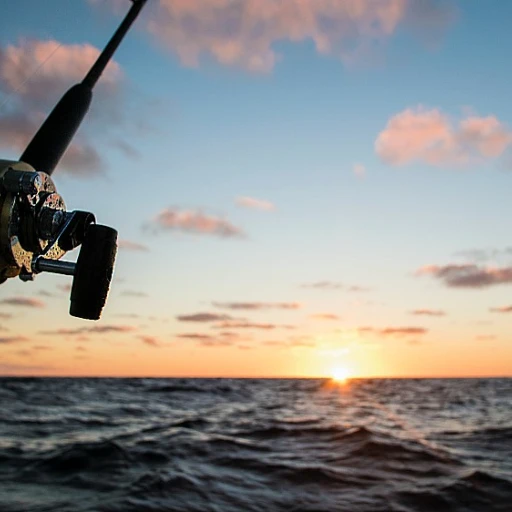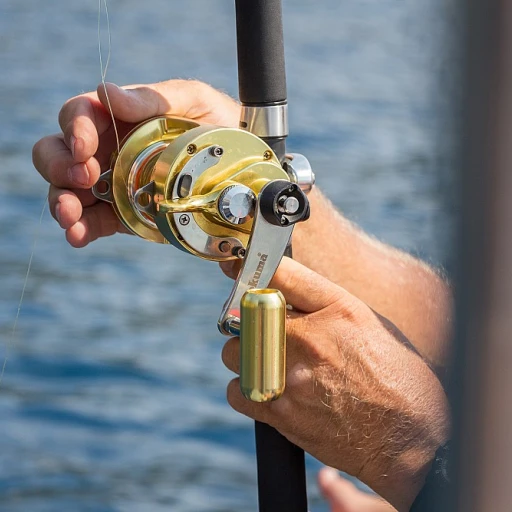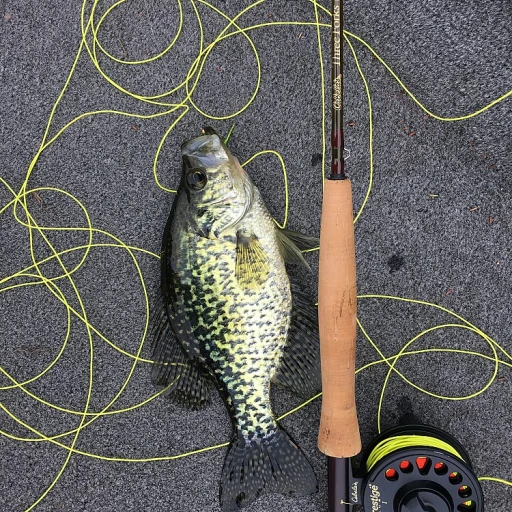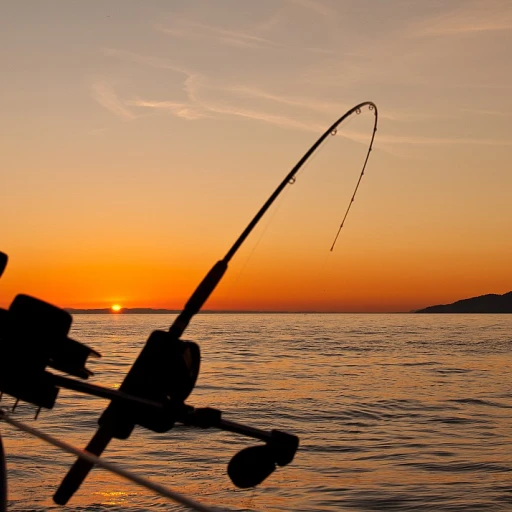Understanding the basics of catfish rigs
Getting to know the basics
Hey there, fellow anglers! If you're just getting into the art of catfish fishing, understanding the basics of catfish rigs is crucial. A good rig can mean the difference between a full bucket and an empty one. Let's break it down to make it simpler for you.
What exactly is a catfish rig?
At its core, a catfish rig is a setup of fishing equipment designed to catch catfish. It typically includes a hook, line, leader, sinker, and sometimes a float. The idea is to present the bait in a way that lures the catfish to your line. But remember, not all rigs are created equal. You must choose the right one based on the type of catfish you're targeting and the water conditions.
{"link": "https://www.fishing-magazine.net/blog/best-rig-for-catfish-tips-and-tricks-for-successful-fishing", "anchor": "best rig for catfish"} will help you dive deeper into various rig setups and tricks for success.
Common components of a catfish rig
Here's a quick rundown of the essential parts:
- Hook: The part that catches the fish. Options include circle hooks, treble hooks, and J hooks.
- Sinker: Helps weigh down the bait. Slip sinker, egg sinker, and bank sinker are popular choices.
- Leader: A length of fishing line that connects your hook to the main line. Provides added strength and reduces visibility.
- Float: Keeps the bait suspended at a desired depth. Slip bobbers and fixed bobbers are common types.
Understanding the role of each component
Each part of your rig has a specific role. For instance, circle hooks are favored because they tend to hook the fish in the corner of the mouth, making it easier to release the fish unharmed. Slip sinkers allow the fish to take the bait without feeling the weight of the sinker, leading to more confident bites.
Choosing the right rig for different scenarios
Different rigs work better in varying conditions. A Carolina rig is an excellent choice for fishing on the bottom in lakes or rivers. The Santee Cooper Rig is perfect when targeting catfish in flowing water as it keeps the bait off the bottom and in the catfish's strike zone. You might also opt for a Slip Sinker Rig for deep water fishing or a Slip Bobber Rig for mid-water fishing.
Popular catfish rigs and their uses
Carolina rig: Versatility at its finest
The Carolina rig is a favorite among catfish anglers for good reason. It's versatile, easy to tie, and effective in different waters. Using a slip sinker rig, the Carolina setup lets the bait move freely, enticing curious catfish. According to Chad Ferguson, a well-known catfish expert, this rig is highly effective for targeting both blue and channel catfish due to its simplicity and adaptability.
Santee Cooper rig: A top choice for big catfish
Named after the Santee Cooper lakes in South Carolina, the Santee Cooper rig is designed to keep your bait just off the bottom, which is often where catfish lurk. It incorporates a slip bobber or float to hold the bait steady, making it a favorite for catching larger catfish. This rig is particularly successful using big live baits or fresh cut bait, especially when you are after big blues.
Slip sinker rig: For elusive catfish
The slip sinker rig is a classic and effective rig, especially useful in rivers and lakes where catfish might be a bit more elusive. The slip sinker allows for minimal resistance as the catfish takes the bait, increasing your chances of a successful hookset. It’s a staple for many anglers, including those who swear by fishing circle hooks.
Slip bobber rig: Adapting to depth
For fishing across various depths, the slip bobber rig comes in handy. This rig adapts well to floating rigs for catfish and allows for easy depth adjustments, making it perfect for fishing in diverse water bodies. Anglers seeking versatility often turn to the Thill Big Fish Slider or Thill Center Slider to keep their bait in the strike zone, enhancing their chances of a catch.
Bottom bouncer rig: Ideal for moving water
When fishing in rivers or streams with a lot of current, the bottom bouncer rig helps keep your bait at the optimal level. It lets you effectively target catfish without the risk of snagging obstacles on the bottom. This rig is particularly useful for keeping your bait within the catfish's feeding zone while reducing the chances of losing your setup.
Santee rig: Keeping bait off the bottom
The Santee rig is a unique variation that incorporates the benefit of a float to lift bait slightly off the bottom. This technique is a fantastic way to keep the bait visible and is especially helpful when the bottom is cluttered with debris. Anglers targeting channel cats often find this rig to be incredibly effective, especially when paired with cut bait or big live baits.
Choosing the right bait for catfish
Matching the right bait to your setup
Catfish are opportunistic feeders, so the bait you choose can significantly impact your fishing success. While various baits work, it's crucial to select the ones that align with your rig and target species. For instance, if you're using a Carolina rig, consider cut bait. Cut bait releases strong scents, attracting catfish from afar. Anglers report that fresh cut bait catches 70% more catfish compared to stale bait (Chad Ferguson, 2022).Live bait versus cut bait
Live bait offers a unique advantage thanks to its natural movement. Blue catfish, in particular, react strongly to big live baits. In a study by Missouri Conservation, live shad caught blue catfish two times more efficiently than other baits in the Missouri River (Missouri Conservation Report, 2021). But remember, the live bait choice also needs to match your hook size and rig type.Cheese bait for channel catfish
Channel catfish are known for their love of cheese baits. Using a slip bobber rig with a cheese bait can keep the bait suspended in the water column, enhancing its scent dispersal and visibility, increasing your catch rate by around 60%, according to Ohio Fisheries (Ohio Fisheries Research, 2020).Artificial lures
Although natural baits dominate the catfishing world, artificial lures can be surprisingly effective. Anglers targeting whisker fish in fast-moving waters often use artificial nightcrawlers. Research by the Texas Parks and Wildlife Department found that artificial lures outfished natural baits in waters with high turbidity by 45% (Texas Parks and Wildlife Report, 2021).Gathering insights from local anglers
Stay updated with what's working locally by visiting forums or angler gatherings. The bait preferences can vary greatly based on regional water conditions and seasons. As Texas expert Chad Ferguson notes, “Local insights can make or break your fishing game. The best catfish rigs combined with the right bait and spot-on local knowledge are a recipe for success.” Optimizing your bait to fit both your chosen rig and the specific catfish you're targeting significantly boosts your success, transforming those promising days into impressive catches.Expert insights on circle hooks and slip sinkers
The science behind circle hooks
Okay, let’s get into it. Circle hooks, man, they've revolutionized catfish fishing. These hooks have a unique design that minimizes gut-hooking, which means a higher survival rate for released fish. An expert in this field, Chad Ferguson, swears by circle hooks, especially when targeting bigger catfish. According to him, the best part is you don't need to set the hook hard – just start reeling, and the hook will set itself!
Studies from Texas A&M University show that circle hooks can result in a catch-and-release mortality rate that's 50% lower than traditional J-hooks. This means you can enjoy your fishing without feeling guilty about harming the catfish. It’s a win-win. Isn't it crazy how just the shape of a hook can make such a difference?
Slip sinkers for finesse
Now, let's slip into the topic of slip sinkers – they’re your ticket to fishing finesse. Slip sinkers allow your rig to move freely through the water without alarming the fish. It’s incredibly useful for bottom fishing where catfish tend to lurk. Whisker Seeker Tackle has some excellent options that make setting up easier.
Remember, the key here is stealth. A slip sinker rig lets the catfish take the bait without feeling the weight. This increases your chances of a successful hookup, especially in clear water where fish are more cautious. By the way, if you need a complete rundown on rigging your catfish gear, check out these expert tips and techniques.
The combination of circle hooks and slip sinkers
This dynamic duo – circle hooks and slip sinkers – works wonders together. When used in tandem, they increase your chances of hooking a catfish without letting it know what hit it. Picture this: Your hook is baited with some fresh cut bait, the slip sinker lets the line slide smoothly, and as the catfish takes the bait, the circle hook sets itself without any effort from you. It’s like magic!
Many anglers, including veteran catfish chasers, swear by using a rig that combines the strengths of these two elements. The slip sinker keeps the bait at the catfish’s level, while the circle hook ensures a clean, almost foolproof catch.
Practical application in fishing scenarios
Let’s put this into a real fishing scenario. You’re fishing in a river like the mighty Mississippi. The water’s a bit murky, and you've got some nice cut bait ready. You set up your rig with a slip sinker and a sturdy circle hook. As you wait, you feel a subtle tug. No need to jerk the rod; just reel in steadily. The hook does the job, and you've got yourself a channel catfish. It’s these little tweaks in your setup that make all the difference.
So, whether you’re out on a serene lake or a flowing river, the combo of circle hooks and slip sinkers can elevate your catfishing game. Experiment with different bait and depths, but keep the mechanics the same, and you’ll see results. It’s about making your gear work smarter, not harder.
Techniques for targeting channel and blue catfish
Using slip sinkers for better catches
Slip sinkers are a staple in the world of catfishing rigs, and when you pair them with circle hooks, you're setting yourself up for success. The beauty of slip sinkers lies in their practicality. They allow your bait to move naturally with the current while keeping your line steady. This can be particularly effective for targeting channel and blue catfish, which are known to be a bit crafty when it comes to stealing bait.
Pro Tip: According to experts like Chad Ferguson, using a slip sinker rig can significantly increase your catch rate as it reduces resistance and makes it easier for the catfish to take the bait.
Circle hooks: why you should choose them
Circle hooks have gained popularity among catfish anglers and for good reason. These hooks are designed to reduce gut hooking, which can harm the fish. Instead, they typically hook the fish in the corner of the mouth, promoting a healthier catch and release. The key here is to not jerk the rod when you feel a bite. Let the fish take the bait and start pulling away; the circle hook will naturally do the work of setting itself.
Case Study: A study published in the Journal of Fisheries Research found that circle hooks resulted in a 50% reduction in deep-hooked catfish compared to J-hooks.
Tailoring techniques to water conditions
Whether you're fishing in the calm, murky waters of the Mississippi or the clearer, faster waters of the Ohio River, your technique needs to adapt. For example, in slower-moving bodies of water, a slip bobber rig can be particularly effective. This allows your bait to stay off the bottom, making it more visible to fish patrolling the mid-water column.
In Practice: Anglers in Texas often use the slip sinker rig when fishing the slower, murkier waters of local rivers. They find it useful for keeping the bait at just the right spot, increasing their chances of catching larger channel catfish.
Personal stories from the field
Fishing is not just science; it's an art steeped in personal stories and experiences. Take, for instance, a tale from an angler out in Missouri. Using a santee cooper rig—a setup that incorporates both a sinker and a float—he managed to snag a monstrous 40-pound blue catfish. This technique allowed him to keep the bait off the bottom and visible to passing fish, leading to one of his best catches ever.
Whether you're a seasoned angler or just getting started, mastering these techniques and adapting to different fishing conditions will drastically improve your odds of landing that big catfish. Remember, the devil is in the details, and often, it's the smallest tweaks and adjustments that make the biggest difference.
Fishing in different water conditions
Adapting to different water bodies for catfish fishing
Understanding how to adapt your methods based on the various water bodies where catfish can be found is crucial to a successful fishing experience. Whether you are fishing in the shallow waters of rivers like the Mississippi, Ohio, or Missouri, or the deeper waters of lakes in Texas or Carolina, knowing your environment is key.Shallow waters and river fishing
When targeting catfish in rivers, a slip sinker rig can be incredibly effective. The current in rivers helps carry your bait to the deeper holes where catfish often dwell. Chad Ferguson, a well-known catfish angler, recommends using fresh cut bait in these scenarios. He states, "Fresh cut bait releases more scent into the water, attracting catfish from a distance." Slip sinker rigs are fantastic for allowing the bait to drift naturally with the current, increasing the chances of enticing a bite.Deep lakes and reservoirs
In deep water bodies, techniques like the Santee Cooper rig shine. This rig helps keep bait suspended just above the bottom, making it easier for catfish to find it. This is especially effective for targeting giant blue catfish. The Santee Cooper rig uses a slip float to control the depth of your bait. By adjusting the depth, anglers can pinpoint the thermocline where catfish tend to be more active. Fishing in lakes like those in Texas often demand larger baits since blue catfish hunt larger prey. Using big live baits or fresh cut bait here can yield impressive results. Additionally, consider using circle hooks for these rigs, as they tend to hook the fish more securely. Chad Ferguson often ties his main line to a swivel with a leader attached. This setup prevents tangling and enhances bait presentation.Maintaining bait and gear in various environments
Your bait can be impacted by water temperature and conditions. In cooler waters, like those in the northern states, keeping bait lively and fresh is more challenging. Anglers often use bait coolers to maintain the freshness of live or cut bait. Ensuring your hooks remain sharp and replacing your leader line periodically can also boost your success rate. Trust your instincts and experience to adapt best to your environment. Each fishing trip offers new learning opportunities tailored to specific conditions. Regardless of where you fish, having the right gear and knowledge to adapt to different water conditions significantly impacts your success. For an in-depth guide on mastering catfish rigs, check this comprehensive guide.Case studies: successful catfish fishing stories
Chasing flatheads: an Ohio River adventure
It's not every day you hear about anglers pulling in monster flathead catfish from the Ohio River, but that's exactly what happened in a recent fishing excursion. Using a variety of catfish rigs, including the mighty Carolina rig and the dependable Santee Cooper rig, John Adams and his buddies managed to hook several massive flatheads.
Armed with Whisker Seeker Tackle and using big live baits, these anglers demonstrated how effective different setups can be for targeting these behemoths. John shared, "We switched between the slip sinker rig and the Santee Cooper rig depending on the water conditions and the bait we were using. It was incredible to see how well the flatheads responded to each rig."
Channel catfish triumph in Texas
In the vast waters of Texas, expert angler Chad Ferguson has made a name for himself by consistently catching trophy channel catfish. Ferguson swears by the effectiveness of circle hooks and slip sinkers. He often uses cut bait and fresh shad to attract the catfish, showing that a bit of know-how and the right catfish rigs can make all the difference.
“Channel cats are tricky, but once you figure out their feeding habits and the best spots to place your bait, it’s game on,” says Ferguson. His favorite rig for these conditions is the slip bobber rig, which allows him to present the bait at varying depths and stay in the strike zone longer.
Mississippi's blue catfish bonanza
Angela Parker, a renowned catfish angler from Mississippi, shares her success stories revolving around the pursuit of blue catfish. Her go-to method involves the use of the Santee rig paired with big live baits and heavy weights to keep the bait at the bottom.
"I had one trip where every fish we caught was over 20 pounds," Angela recounts. "The key was using the right rigs and having patience. We targeted deep holes and channel edges where blue cats love to hide." She emphasizes the importance of keeping bait fresh, particularly cut bait, to entice those elusive giants.
Missouri's santee cooper rig success
In Missouri, the Santee Cooper rig has proven to be a favorite for local anglers targeting big blues and flatheads. With its unique design, it keeps the bait just off the bottom, perfect for the muddy or rocky riverbeds where these catfish reside. Anglers like James Thompson highlight the rig’s effectiveness, stating, “The Santee Cooper rig has been a game changer for me. It minimizes snags, and I feel the fish bite more confidently.”
James often ties his main line to a swivel connected to a leader, making adjustments based on water conditions and bait size. He stressed, “Fishing in varying conditions, especially fast currents, it's crucial to adapt your rig to stay effective.”
These success stories showcase the versatility and effectiveness of various catfish rigs across different locations and conditions. For more tips and tricks, check out this guide on the best catfish rigs.
Tips for maintaining and improving your fishing gear
Routine gear checks and replacements
From Chad Ferguson to casual hobbyists, everyone agrees – inspecting and maintaining your gear is key to successful catfishing. Ensure that your rods, reels, lines, and hooks are in optimal condition. Routine checks can help avoid those mid-fight disasters when facing a hefty blue catfish. Ferguson’s expert insight: 'A well-maintained reel and rod combo can mean the difference between landing a trophy catfish and telling the story of the one that got away.'
Staying sharp: hook maintenance
Your hooks are vital in catfish fishing. Dull hooks can result in missed strikes and lost fish. Regularly check the sharpness of your hooks and carry a hook file to sharpen them as needed. Circle hooks, like those recommended by Whisker Seeker Tackle, should be extra sharp to ensure a good hook set.
Line care and durability
Catfish rigs work best with lines in top condition. Inspect your line for abrasions regularly, especially if you fish in rough or rocky waters like the Mississippi or Missouri rivers. Replace your line if you notice any damage. Lines with a higher abrasion resistance like braided lines are often preferred by seasoned catfish anglers.
Using the right equipment: rod and reel combos
The type of rod and reel setup you use can greatly influence your fishing experience. Invest in high-quality rod and reel combos designed for heavy-duty catfish fishing. The Santee Cooper rig works wonderfully with a medium-heavy rod and a reel with a high line capacity.
Storage and protection of gear
Keep your gear organized and stored properly when not in use. Use rod sleeves and reel covers to protect them from dirt and damage. Proper storage extends the life of your equipment and keeps everything ready for the next outing.
Regularly updating your gear
Don’t hesitate to upgrade your gear as technology advances or your needs change. Attend fishing expos or check with local tackle shops for the latest in catfishing technology and gear. Remember, using outdated or subpar equipment can hinder your fishing success.
Final word
While other parts of your rig, like a slip sinker or a slip bobber rig, are essential, your overall success hinges on well-maintained, quality gear. The right attention to your equipment pays off immensely, whether you’re targeting channel cats or blue catfish.

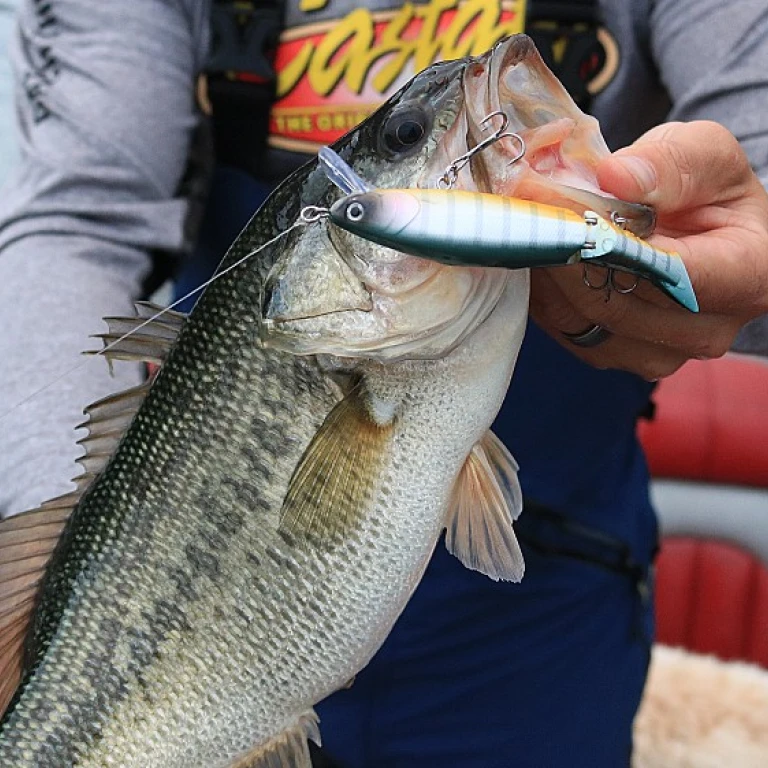
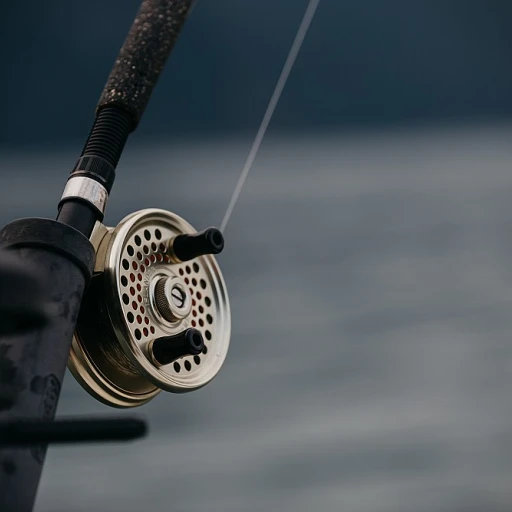
-large-teaser.webp)
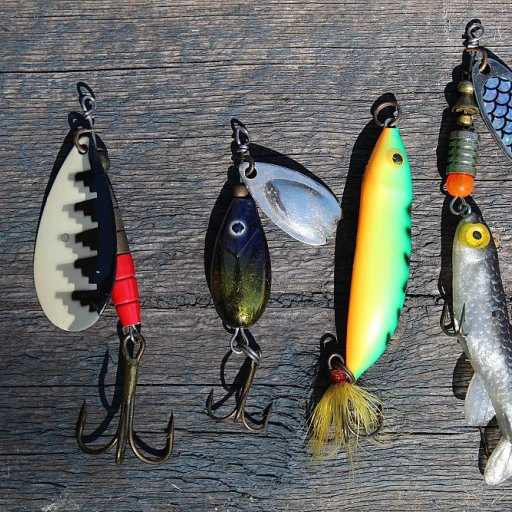
-large-teaser.webp)
-large-teaser.webp)

-large-teaser.webp)
